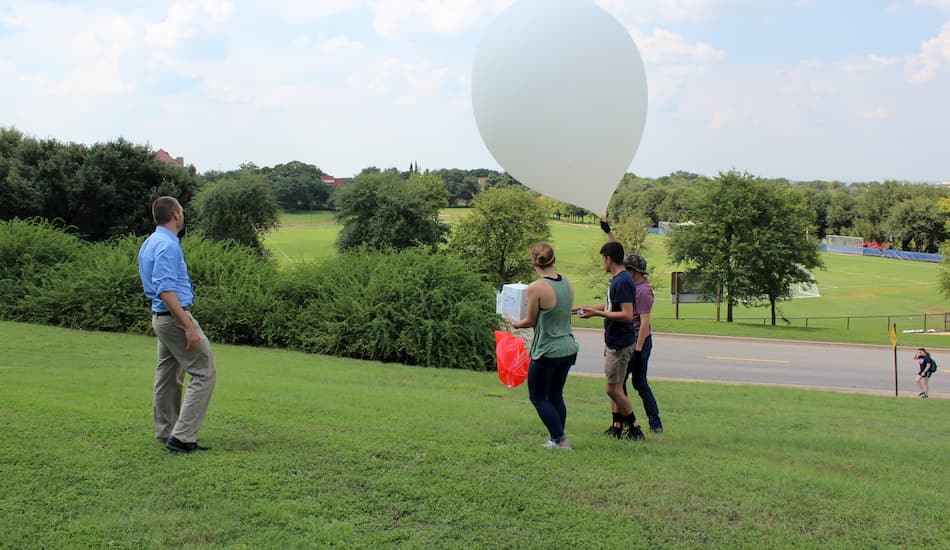From quarks to cosmos, physics offers a portal into understanding how the world works at a fundamental level and a view of the frontier of the unanswered questions that remain.
The introductory physics sequence involves studying mechanics, as well as electricity and magnetism, both of which incorporate an introduction to programming using VPython. The Physics minor offers students the opportunity to study quantum mechanics and thermodynamics and more advanced computational approaches to modeling scientific phenomena. Through a partnership with the University of Texas at Austin, students also have the opportunity to take courses in nanotechnology.

The Classroom and Beyond
Students have the opportunity to carry out research with a faculty mentor. Currently, the main research focus of the faculty is on atmospheric science, where we launch instruments attached to a weather balloon that provide a vertical profile of the ozone concentration along with pressure, temperature, relative humidity, and the wind speed and direction from the surface up to the where the balloon bursts at approximately 100,000 feet in altitude. Among other things, these measurements can help inform what factors are affecting air quality at the surface in urban areas.
A common conference for students interested in physics to attend and present their work is the Texas Section of the American Physical Society Meeting, which takes place once each semester.
Students are also invited to join the Physics Club, which in addition to various activities, helps prepare students for the different opportunities available to students studying physics.
Required Courses (8 hours)
- PHYS 2325 University Physics I and
- PHYS 2125 Mechanics and Waves Labor
or
- PHYS 2425 University Physics I
- PHYS 2326University Physics II and
- PHYS 2126 Electricity, Magnetism and Optics Lab
or
- PHYS 2426 University Physics II
Electives (10 hours total)
- PHYS or CHEM 3336, 3136 Physical Chemistry I, Lab
- PHYS or CHEM 3337 Physical Chemistry II
- PHYS, BINF, COSC, or MATH 3338 Numerical and Scientific Methods
- PHYS 3345, 3445 Special Topics
- PHYS 4146, 4246, 4346, 4446 Independent Study
- PHYS 4157 Research in Physics
SEU to You
Associate Professor of Physics Paul Walter’s course incorporates an online tool that makes complicated textbook passages more accessible and exams that incorporate team and individual rounds. Lab activities focus on data analysis and opportunities to use VPython.
Our Faculty
”Our faculty employ an engaging, student-centered approach to teaching physics and astronomy and are readily available to help students outside of class. Students of any major are welcome to work with our physics faculty on research on a variety of projects in atmospheric science and air quality.”
—Paul Walter, Associate Professor of Physics